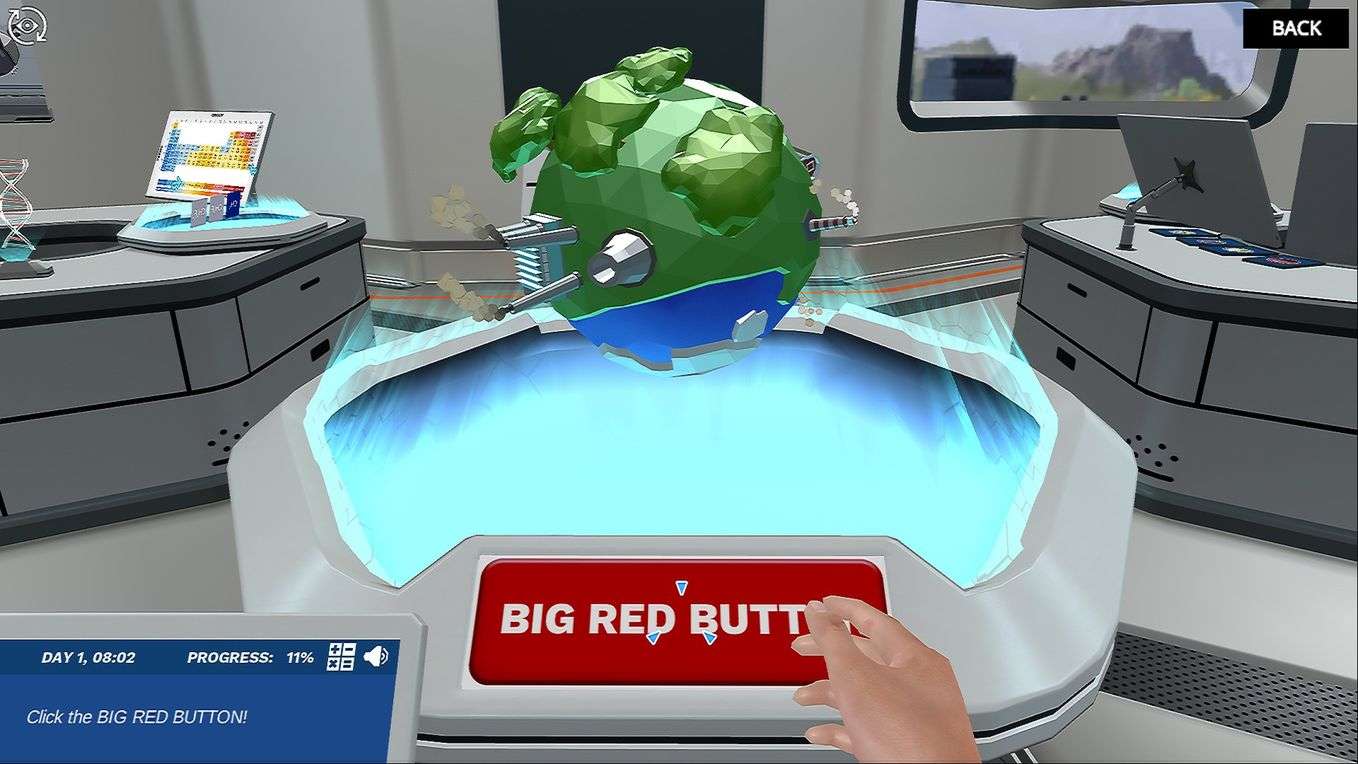Heading 1
Heading 2
Heading 3
Heading 4
Heading 5
Heading 6
Lorem ipsum dolor sit amet, consectetur adipiscing elit, sed do eiusmod tempor incididunt ut labore et dolore magna aliqua. Ut enim ad minim veniam, quis nostrud exercitation ullamco laboris nisi ut aliquip ex ea commodo consequat. Duis aute irure dolor in reprehenderit in voluptate velit esse cillum dolore eu fugiat nulla pariatur.
Block quote
Ordered list
- Item 1
- Item 2
- Item 3
Unordered list
- Item A
- Item B
- Item C
Bold text
Emphasis
Superscript
Subscript
About This Simulation
What would happen to our world if intermolecular forces disappeared? Take on a new challenge with Dr. One to learn about intermolecular forces and save the day by putting the world back together.
Learning Objectives
- Identify three types of intermolecular forces: temporary dipoles, permanent dipoles, and hydrogen bonding
- Describe and predict how these intermolecular forces affect a molecules bulk properties, such as state of matter and boiling point
- Predict the types of intermolecular forces present between different molecules
About This Simulation
Lab Techniques
Related Standards
- HS-PS1-3
Learn More About This Simulation
This is the principles (high school) version of the simulation. For a more advanced version, please see: “Intermolecular Forces: Rediscover the forces to save the world!”
Intermolecular forces hold our world - and us - together. In this simulation, you will learn about the intermolecular forces caused by temporary molecular dipoles, permanent molecular dipoles, and hydrogen bonding. You will figure out how to tell the different intermolecular forces apart, identify the substances where they are likely to occur, estimate their relative strength, and relate them to the bulk properties of matter. Can you use your newfound knowledge to save the day?
Discover intermolecular forces
After an unfortunate virtual lab accident, all intermolecular forces in the world have been disabled. It is now your mission to put them back. With the help of Dr. One, you will explore the three types of intermolecular forces and help save the world!
Permanent and temporary dipoles
You will use the periodic table of the elements to find out if a bond is polar based on the electronegativity of its atoms.Using this knowledge, and with the help of molecular 3D models, you will determine the presence of permanent dipoles in compounds such as fluoromethanes. You will be able to deduce how intermolecular forces affect a molecule’s state of matter such as the effect of the resulting permanent dipole-dipole forces on their boiling point. You will also learn about a special dipole-dipole force, such as the hydrogen bond, and its importance to life as we know it. Finally, you will learn about temporary dipoles and Van der Waals dispersion forces to explain the halogen's state of matter.
Put the world back together
After learning about all the intermolecular forces, it is time to put them back into the world. But be careful! You must pay attention to which molecules produce which intermolecular bonds. By the end of this simulation you should be able to pair up molecules with their dominant intermolecular forces and save the day.
For Science Programs Providing a Learning Advantage
Boost STEM Pass Rates
Boost Learning with Fun
75% of students show high engagement and improved grades with Labster
Discover Simulations That Match Your Syllabus
Easily bolster your learning objectives with relevant, interactive content
Place Students in the Shoes of Real Scientists
Practice a lab procedure or visualize theory through narrative-driven scenarios


FAQs
Find answers to frequently asked questions.
Heading 1
Heading 2
Heading 3
Heading 4
Heading 5
Heading 6
Lorem ipsum dolor sit amet, consectetur adipiscing elit, sed do eiusmod tempor incididunt ut labore et dolore magna aliqua. Ut enim ad minim veniam, quis nostrud exercitation ullamco laboris nisi ut aliquip ex ea commodo consequat. Duis aute irure dolor in reprehenderit in voluptate velit esse cillum dolore eu fugiat nulla pariatur.
Block quote
Ordered list
- Item 1
- Item 2
- Item 3
Unordered list
- Item A
- Item B
- Item C
Bold text
Emphasis
Superscript
Subscript
A Labster virtual lab is an interactive, multimedia assignment that students access right from their computers. Many Labster virtual labs prepare students for success in college by introducing foundational knowledge using multimedia visualizations that make it easier to understand complex concepts. Other Labster virtual labs prepare learners for careers in STEM labs by giving them realistic practice on lab techniques and procedures.
Labster’s virtual lab simulations are created by scientists and designed to maximize engagement and interactivity. Unlike watching a video or reading a textbook, Labster virtual labs are interactive. To make progress, students must think critically and solve a real-world problem. We believe that learning by doing makes STEM stick.
Yes, Labster is compatible with all major LMS (Learning Management Systems) including Blackboard, Canvas, D2L, Moodle, and many others. Students can access Labster like any other assignment. If your institution does not choose an LMS integration, students will log into Labster’s Course Manager once they have an account created. Your institution will decide which is the best access method.
Labster is available for purchase by instructors, faculty, and administrators at education institutions. Purchasing our starter package, Labster Explorer, can be done using a credit card if you are located in the USA, Canada, or Mexico. If you are outside of North America or are choosing a higher plan, please speak with a Labster sales representative. Compare plans.
Labster supports a wide range of STEM courses at the high school, college, and university level across fields in biology, chemistry, physics, and health sciences. You can identify topics for your courses by searching our Content Catalog.















